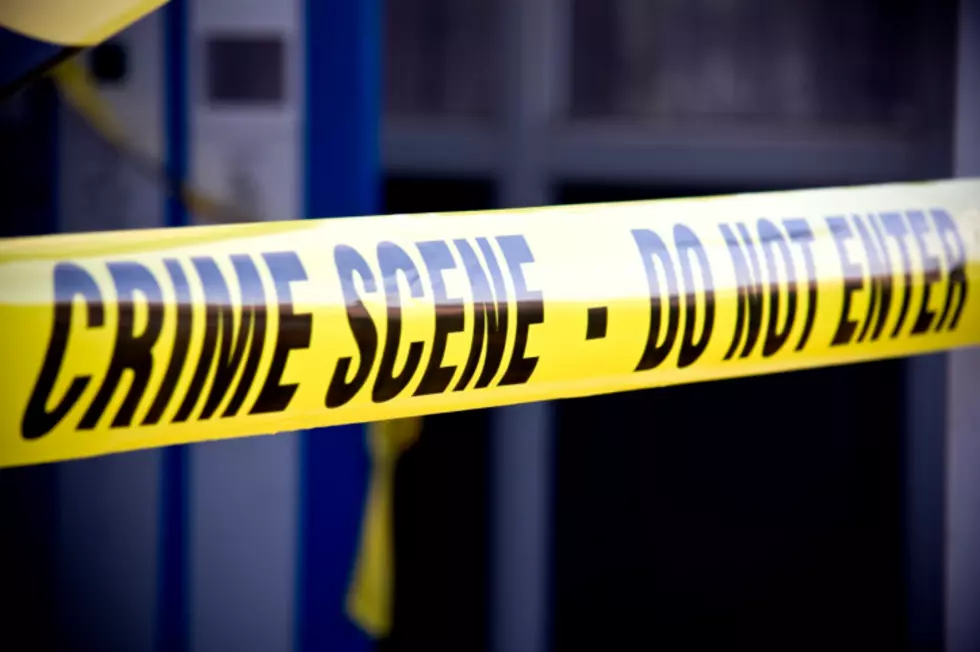
Give it a Brake: The 10 Speediest States in America

Could we change options with quotes or companies?
Consider the swiftness with which we’ve come from a fledgling, newly independent nation to a global superpower. Or that hallmark of U.S. dining culture: “fast food.” Or, of course, how quickly and recklessly we drive, from sea to shining sea.
But speeding puts all drivers, behind the wheel or not, at great risk: the most recent data from the Insurance Institute for Highway Safety (IIHS) shows that in the year 2017, speeding significantly contributed to 26 percent of motor vehicle crash deaths.
And while there’s a whole laundry list of excuses that you could use to get out of a speeding ticket (“I was late for work!” “I have a doctor’s appointment!” “I’m normally a careful driver!”), law enforcement is focused on keeping you, and the roads you drive on, safe. Most of the time, no matter the location or circumstance, you’ll be slapped with a ticket—and a fine. Plus, getting a speeding ticket isn’t only a bureaucratic bother and a financial hit. It could also impact your insurance premium. Your insurance provider might take your speeding citation to mean you’re a risky driver and hit you with higher rates at your next renewal.
Some states see a higher number of speeding offenders as a share of their driving population, for any collection of reasons: stringent speeding laws, geographic particularities, or just something in the water. For the second year in a row, the data scientists at Insurify determined the top 10 fastest states in the nation, based on per-capita speeding ticket offenses from the past seven years.
Here’s what they found.
Insights
- Need for speed. Upon analyzing current speed limits in all fifty states, Insurify’s data team found that none of the top 10 speediest states mandate the highest speed limits for any category of road in any given state. For instance, South Dakota’s urban interstate speed limit is 80 mph, but South Dakota drivers did not cause their state to crack the top 10. The same goes for Montana and Nevada, which mandate 80 mph on rural interstate roads. All states in the top 10 possess fairly middling speed limits, with some (like Hawaii, which has the lowest rural interstate speed limits in the country) boasting pretty tight driving restrictions.
- Not out in full force? Perhaps contrary to popular assumption, our data scientists did not find a significant relationship between the proportion of full-time law enforcement within a state’s population and the rate of speeding offenses. In fact, there was a weak negative correlation between these variables, suggesting that relative size of police presence in any given state—including highway patrol—somewhat inversely corresponds with rates of speed violations. Explanations for high rates of speeding can’t necessarily be pegged on those who enforce state law.
- A sparser police presence. This stat might support the insight above. All states listed in the top 10 below rank outside the top 15 for number of full-time law enforcement per 1,000 people.
Methodology
The data scientists at Insurify, an auto insurance quotes comparison website, collected data from their database of over 1.6 million car insurance applications, which ask questions about users’ past seven years of driving history, vehicle type, and other relevant information. They ranked each state in the U.S. by reported speeding citations per capita and thereby determined the top 10 states with the highest percentage of speedy drivers. Additional data on statewide speed limits (in miles per hour) and full-time law enforcement employment numbers come from the Insurance Institute for Highway Safety (IIHS) and the FBI’s Uniform Crime Reporting (UCR) 2017 data, respectively.
The following states have the highest percentage of speeding violations in America:
10. Nebraska
- Percentage of drivers reporting speeding violations: 15.0%
- State speed limits
- Rural interstates: 75
- Urban interstates: 70
- Other limited access roads: 70
- Other roads: 65
- Number of full-time law enforcement officers: 3,345 (1.96 officers per 1,000 pop.)
Nebraska’s sprawling roads traverse the Plains, but hitting the pedal to the metal on these thoroughfares is practically begging for a citation. Nebraska’s speeding fines can range anywhere from $10 (for going less than 5 mph over the mandated speed limit) to $600 (for going 35 or more mph over the limit in a construction or a school crossing zone).
9. Idaho
- Percentage of drivers reporting speeding violations: 15.0%
- State speed limits
- Rural interstates: 75; 80 on specified segments of road; 70 for trucks
- Urban interstates: 75; 80 on specified segments of road; 65 for trucks
- Other limited access roads: 70
- Other roads: 70
- Number of full-time law enforcement officers: 3,345 (1.96 officers per 1,000 pop.)
Idaho possesses the lowest number of officers per 1,000 people on this list. Of course, it’s not a state that’s known for its population density. But the state nevertheless takes speeding offenses seriously: Idaho employs an “absolute” speed limit law, meaning that one (!) mile per hour over the limit is not a minor overestimation—it’s a law violation.
8. Hawaii
- Percentage of drivers reporting speeding violations: 15.0%
- State speed limits
- Rural interstates: 60
- Urban interstates: 60
- Other limited access roads: 55
- Other roads: 45
- Number of full-time law enforcement officers: 2,951 (2.07 officers per 1,000 pop.)
Hawaii has had its share of infrastructure trouble, including the fourth-highest percentage of rural roads in poor condition among all U.S. states. Add to its roadway woes a major issue with speeding. The Aloha State is noted for its bucolic countryside speedways, but with scenic views come stricter speed limit rules. Rural and urban interstate speed limits cap at only 60 miles per hour; these speeds can be set by county ordinance or the state’s director of transportation rather than state law.
7. Wisconsin
- Percentage of drivers reporting speeding violations: 15.7%
- State speed limits
- Rural interstates: 70
- Urban interstates: 70
- Other limited access roads: 70
- Other roads: 55
- Number of full-time law enforcement officers: 12,870 (2.23 officers per 1,000 pop.)
Wisconsin drivers, be warned: your state knows you have an issue with violating speed limits. The state’s Department of Transportation website admits that speeding is a statewide issue, and provides some sobering stats to boot. The state handed down around 142,000 speeding convictions in 2014. Ticket fines range anywhere from $200 to $800 in this state—a steep price to pay if you’re just trying to buy a wheel of cheese.
6. Wyoming
- Percentage of drivers reporting speeding violations: 15.9%
- State speed limits
- Rural interstates: 75; 80 on specified segments of road
- Urban interstates: 75; 80 on specified segments of road
- Other limited access roads: 70
- Other roads: 70
- Number of full-time law enforcement officers: 1,243 (2.25 officers per 1,000 pop.)
Although it’s the least populous state in the Union, Wyoming ranks high for speeding offenses. Perhaps there’s not much endemic to the Cowboy State that contributes to this trend, however. Tourists and visitors make up a large swath of speeding offenders. Wyoming Highway Patrol is notorious for slapping fines on out-of-state speeders, and major traffic from migrating drivers hoping to catch a Wyoming-sky glimpse of the solar eclipse in August 2017 was the latest major traffic event in the state’s history.
5. North Dakota
- Percentage of drivers reporting speeding violations: 16.4%
- State speed limits
- Rural interstates: 75
- Urban interstates: 75
- Other limited access roads: 70
- Other roads: 65
- Number of full-time law enforcement officers: 1,749 (2.32 officers per 1,000 pop.)
Along with Idaho and Wyoming, North Dakota’s rural and urban interstate speed limits are the highest on this list. Its relatively high number of full-time officers per capita also proves interesting, given the state’s low population.
4. Ohio
- Percentage of drivers reporting speeding violations: 16.5%
- State speed limits
- Rural interstates: 70
- Urban interstates: 65
- Other limited access roads: 70
- Other roads: 55
- Number of full-time law enforcement officers: 13,460 (2.00 officers per 1,000 pop.)
Ohio’s recent license reinstatement amnesty initiative might prove to help those who have undergone driver’s license suspension for any number of driving or non-driving offenses. However, speeding remains a minor enough offense that even repeat instances usually don’t warrant a suspension. Fines and fees will vary by county, so the price tag for getting caught speeding could range across hundreds of dollars.
3. Virginia
- Percentage of drivers reporting speeding violations: 16.6%
- State speed limits
- Rural interstates: 70
- Urban interstates: 70
- Other limited access roads: 65
- Other roads: 55
- Number of full-time law enforcement officers: 19,036 (2.25 officers per 1,000 pop.)
Any driving in Virginia that exceeds 80 miles per hour, or 20 miles per hour over the limit, is classified as reckless driving: a charge that can lead to a hefty fine (up to $2,500), license suspension, or even jail time. And don’t expect to pay a speeding fine easily if you’re an out-of-state driver: you’ll be charged with a crime and have to appear in Virginia court. Since the rural interstate speed limit in Virginia is 70 miles per hour, going just 11 over that speed limit could spell disaster—especially if you’re just passing through. As for native Virginians, their own recklessness has led to this state’s placement at #3 nationally.
2. Iowa
- Percentage of drivers reporting speeding violations: 16.9%
- State speed limits
- Rural interstates: 70
- Urban interstates: 55
- Other limited access roads: 70
- Other roads: 65
- Number of full-time law enforcement officers: 5,252 (1.70 officers per 1,000 pop.)
The highest-ranking Midwestern state on this list, Iowa sees over 1 in 6 drivers get faced with a speeding ticket. Iowa somewhat notoriously also adds a 35 percent surcharge to almost all enforcement-related fines, including speeding violations. Together with court costs and insurance premium hikes, there’s a good chance that those 16.9 percent of Iowa drivers have experienced some serious financial misfortune.
1. South Carolina
- Percentage of drivers reporting speeding violations: 17.0%
- State speed limits
- Rural interstates: 70
- Urban interstates: 70
- Other limited access roads: 60
- Other roads: 55
- Number of full-time law enforcement officers: 8,380 (2.33 officers per 1,000 pop.)
Coming in at #1 is the Palmetto State. While South Carolina has typical state speed limits, its drivers seem all too eager to exceed them. S.C. also boasts the highest number of law enforcement officers per 1,000 people on this list. At a 17 percent (nearly 1 in 5) rate of speeding violations among drivers, South Carolinians have much to answer for—and pay for in fees.
More From 96.1 The Eagle









